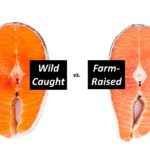By David Blyweiss, M.D., Advanced Natural Wellness
June 28, 2013
- Is your gallbladder a “throw away” organ?
- What your gallbladder does for you
- 9 tips to lower your risk of gallstones
Over the years you’ve probably had a few of your organs removed. It’s not uncommon to lose your tonsils, adenoids or appendix in childhood.
And while I’ve never actually sat down and counted them up, I’m pretty sure I have more patients without these body parts than with them.
As an adult there is one more body part surgeons may be trying to get their hands on.
I’ll tell you all about it in just a moment. But first I want to caution you about dangers of handing away your organs to over-eager surgeons.
You see, several organs in your body are considered to be relics left over from the past. These organs are seen as outdated – or vestigial – body parts that modern man has no use for.
Consequently, once a problem arises with one of them, it’s easier to take it out than resolve the true, underlying problem.
So when you were a kid and had one too many sore throats, you may have been forced to hand over your tonsils and adenoids.
Open your arteries, improve blood flow for a new health miracle...
Did you know your circulatory system has over 60,000 miles of arteries, veins and other blood vessels, if stretched end to end?
But as you age, your blood vessels undergo changes, which may cause them to stiffen, thicken and get clogged.
GOOD NEWS! Doctors have now identified a “Miracle Molecule” inside your arteries that helps OPEN your arteries and IMPROVE blood flow.
It’s what Dr. Valentin Fuster calls it, "One of the most important discoveries in the history of cardiovascular medicine."To you, that means...
- Healthy blood pressure
- Sharper mind and memory
- Skyrocketing energy and muscular strength
- Increased pleasure and passion in the bedroom
- Improved circulation to every cell and organ in your body
Go here to discover a new natural way to significantly boost the levels of this miracle molecule in YOUR body NOW!
But over the years we’ve learned tonsillectomy doesn’t have much impact on the amount of sore throats that will occur in the future. A Cochrane review shows it only reduces sore throats by about 5 days per year. And kids who don’t have the procedure get better “spontaneously.”
In the meantime, both the tonsils and adenoids are your immune system’s first line of defense. They help your body fight infection and increase T-cell count. (T-cells are the ones that attack viral infections, fungal infections and even some bacterial infections.)
And what about your appendix?
Once again, this “useless” organ isn’t so useless, either. Quite the contrary. It’s a “safe-house” where positive gut bacteria are stored. And these bacteria are only released if and when you experience a gastrointestinal infection, diarrhea or other disturbance.
Now that you are older, there is one more body part that surgeons are quick to steal from you at the first sign of trouble: Your gallbladder.
If you’re experiencing the pain of gallstones, it’s easy to agree with the idea of undergoing the knife.
But it turns out your gallbladder may not be a “throw away” organ, either. And it might be time to put your foot down…
The fact of the matter is we have all of our organs for a reason. And they should never be removed unless absolutely necessary. However, most gallbladder removals (cholecystectomies) are unnecessary.
Your gallbladder acts as a storage tank for bile, which is very important to your health. It carries toxins and waste from your body. It breaks down fats in the foods you eat so they become readily digestible. Bile also helps increase the absorption of fat soluble vitamins like A, D, E and K.
The World's Quickest Solution for Ending Prostate and Urinary Misery
This has recently been revealed to be one of the only real breakthroughs in prostate health.
The seeds of a strange fruit (sometimes called "Chinese Apples") hold powerful phytonutrients that are a revolution in prostate health.
In fact, UCLA and Veterans Administration research have now proved this to be true.
Not only that, but it may be the worlds quickest solution for ending prostate misery.
Simply stated, these phytonutrients represent a huge step beyond beta sitosterol, saw palmetto, and other phytosterols alone.
Simply click HERE if you want to have fast prostate relief...restful, uninterrupted sleep...no more constant "urges to go"...enhanced virility...and optimal prostate support for life.
If you don’t have your gallbladder, it makes it much harder to digest fatty foods. Additionally, it interferes with the absorption of fat soluble vitamins.
Research also shows people who have had their gallbladder removed are at much greater risk of intestinal cancer, colon cancer and cancer of the rectum.
And then there is the risk of something called “post-cholecystectomy syndrome.” This is a group of symptoms such as abdominal pain, indigestion, vomiting and other gastrointestinal disorders. And they can last for months – even years – after surgery.
Now there are times when there’s no choice but to give up your gallbladder. I’m not saying there isn’t.
Sometimes the bile in your gallbladder becomes over-saturated with cholesterol that hardens and forms stones. These gallstones can be as small as a pea or as large as a walnut. The small ones often pass on their own and never give you a single problem.
But the larger ones can cause pain and inflammation of the gallbladder wall. Worse, they can lodge in the bile duct leading out of the liver or in the narrow opening to the duodenum (at the start of the small intestine.) This blockage causes bile to back up into the pancreas.
It can also lead to pancreatitis, a life-threatening inflammation of the pancreas.
So you can see there are times when surgery to remove the gallbladder is probably necessary.
But, in many cases prevention is possible. And it starts with your diet.
If you’ve ever had an episode of gallstones you know how painful they can be. But before you opt for surgery there are some changes you can make that may help eliminate the problem without going under the knife.
Here’s what I tell my patients who are prone to gallstones:
- Drink plenty of water throughout the day to keep the bile in your gallbladder fluid.
- Cut back on your meat consumption. Meat provides heme iron, which seems to boost the risk of gallstones. Reduce your meat consumption to no more than two 3-ounce servings a week and opt for egg whites, beans and organic soy for most of your protein.
- Watch out for trans-fats. Research shows trans-fatty acids, which are found in hydrogenated vegetable oils, increase the risk of gallstone disease. And these oils are found in everything from cookies to salad dressings. Bypass any food that has the word “hydrogenated” on the label.
- Stick with low-glycemic foods. The more high-glycemic carbs you eat, the greater your risk of blood glucose abnormalities and insulin resistance – both of which have been tied to an increased risk of gallstones. The easiest way to avoid high-glycemic foods is to stay away from processed foods like bread, pasta and sugar. You can get plenty of healthier carbs from seeds, beans, nuts, fruits and veggies.
- Eat your greens. Kale, Swiss chard, spinach, and other leafy greens help protect against gallstones. Not only do greens offer lots of healthy fiber—which lowers cholesterol—they also produce enzymes that help digest fat. Other foods that reduce the risk include citrus fruit, strawberries, papaya, peppers, broccoli, and cauliflower.
- Drop those excess pounds slowly. I know, it’s easier said than done. But if you start eating healthier foods and take a nice long walk every day you’ll be on the right track. However, please don’t go on a crash diet or you could actually increase your risk of gallstones.
- Take 1,000 mg of vitamin C daily. In one study, people with higher blood levels of vitamin C were half as likely to develop gallstones as those with lower levels.
- Try lecithin. This B vitamin promotes bile solubility (meaning it increases absorbability into another substance) and just might prevent the formation of gallstones. Lecithin granules are available at most health food stores. Take 1 rounded tablespoon (500 mg) in applesauce, yogurt, or oatmeal every day.
- Opt for enzymes. For those times when fatty foods are unavoidable, take digestive enzymes. The enzyme that helps digest fat, which is produced primarily in the pancreas, is called lipase. Many digestive enzyme supplements contain lipase along with a variety of other enzymes to foster good digestion.
So before you agree to lose another body part, give these strategies a try. At the very least, get a second opinion. It just might help you hang onto this important organ and avoid the complications that come with the removal of it.
Resources:
Burton MJ, Glasziou PP. Tonsillectomy or adeno-tonsillectomy versus non-surgical treatment for chronic/recurrent acute tonsillitis. Cochrane Database of Systematic Reviews 2009, Issue 1.
Tonsils Make T-Cells, Too, Ohio State Study Shows. Ohio State University. 2012.
Burton MJ, Glasziou PP. Tonsillectomy or adeno-tonsillectomy versus non-surgical treatment for chronic/recurrent acute tonsillitis. Cochrane Database Syst Rev. 2009 Jan 21;(1).
Smith HF, Fisher RE, Everett ML, Thomas AD, Bollinger RR, Parker W. Comparative anatomy and phylogenetic distribution of the mammalian cecal appendix. J Evol Biol. 2009 Oct;22(10):1984-99.
Goldacre MJ, Wotton CJ, Abisgold J, Yeates DG, Collins J. Association between cholecystectomy and intestinal cancer: a national record linkage study. Ann Surg. 2012 Dec;256(6):1068-72.
Girometti R, Brondani G, Cereser L, Como G, Del Pin M, Bazzocchi M, Zuiani C. Post-cholecystectomy syndrome: spectrum of biliary findings at magnetic resonance cholangiopancreatography. Br J Radiol. 2010 Apr;83(988):351-61.
Tsai CJ. Heme and non-heme iron consumption and risk of gallstone disease in men. American Journal of Clinical Nutrition. 2007;85:518-522.
Tsai CJ, Leitzmann MF, Willett WC, Giovannucci EL. Long-term intake of trans-fatty acids and risk of gallstone disease in men. Arch Intern Med. 2005 May 9;165(9):1011-5.
Cojocaru C, Pandele GI. [Metabolic profile of patients with cholesterol gallstone disease]. Rev Med Chir Soc Med Nat Iasi. 2010 Jul-Sep;114(3):677-82.
Walcher T. Vitamin C supplement use may protect against gallstones: an observational study on a randomly selected population. BMC Gastroenterology. 2009;9:74






